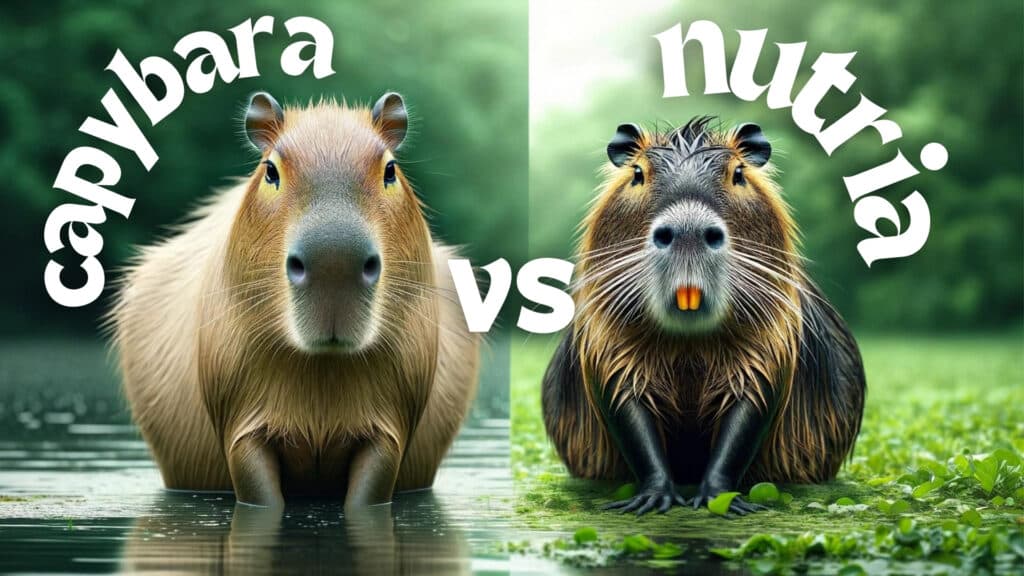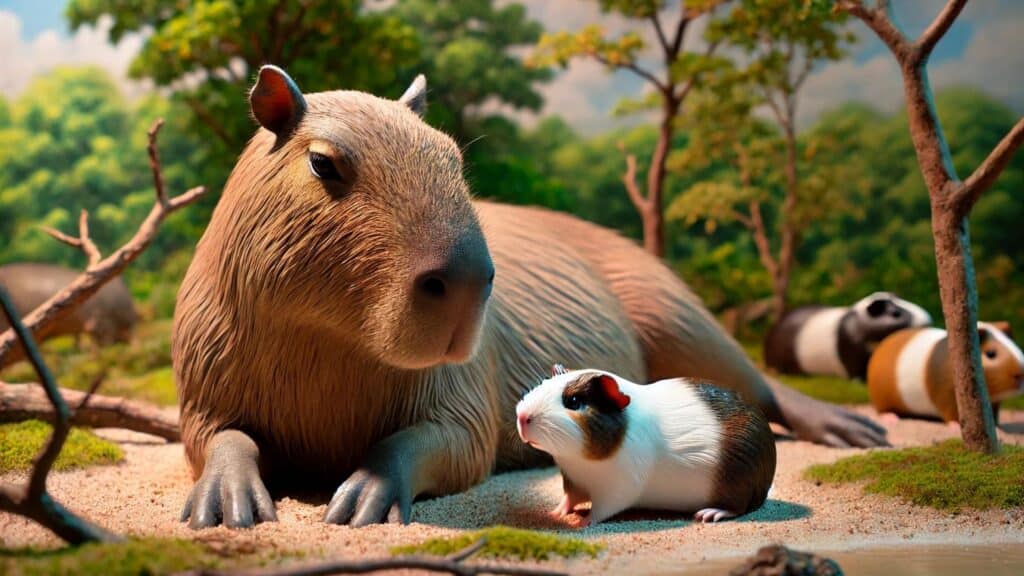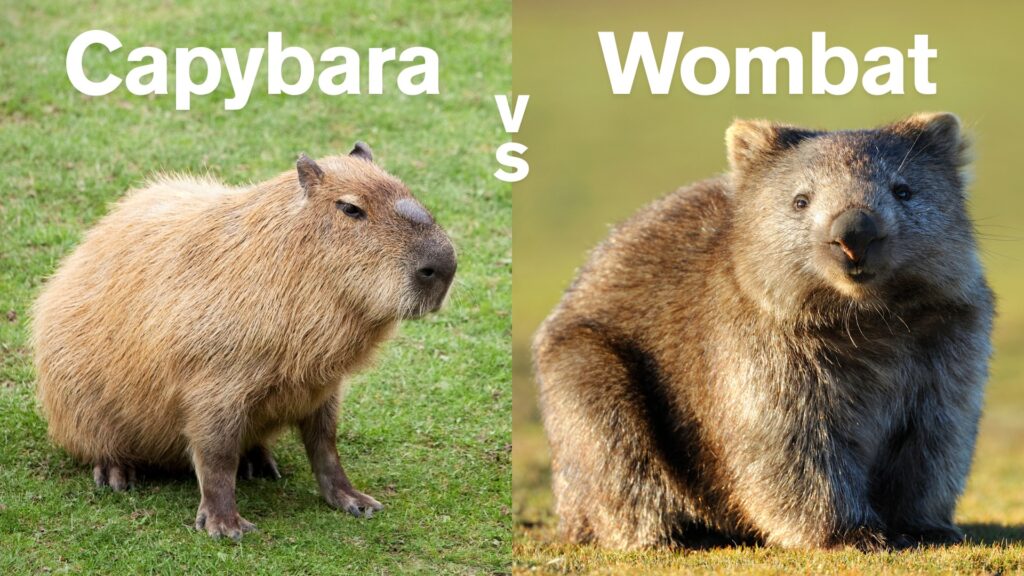When we think of wild animal rivalries, capybaras and pelicans usually don’t come to mind until you see a pelican trying to gulp down a capybara-shaped snack. But what really sets these two vastly different creatures apart? One is the world’s largest rodent, calm and lovable. The other is a fish-devouring bird known for its giant throat pouch and relentless hunting style.
Let’s break down their differences in behavior, personality, and surprising interactions (yes, including that bizarre question: why do pelicans always want to eat capybaras?)
Main Key Differences
| Feature | Capybara | Pelican |
|---|---|---|
| Habitat | Wetlands, riversides, forests | Coasts, lakes, estuaries, freshwater zones |
| Diet | Herbivore (grass, fruit, aquatic plants) | Carnivore (primarily fish) |
| Social Structure | Highly social, live in large groups | Nest in colonies, hunt solo or in groups |
| Threats | Jaguars, caimans, humans | Predators include eagles, foxes, humans |
| Role in Ecosystem | Grazers, seed dispersers | Top aquatic bird predators |
Intelligence

Capybaras are emotionally intelligent, capable of forming strong social bonds. They can recognize individual human voices and even respond to names. Pelicans, on the other hand, show problem-solving intelligence—working as a team to herd fish, or learning to steal prey from fishermen. If you’re curious how capybaras compare to other burrowing herbivores, you might also enjoy this detailed look at how they stack up against wombats.
Winner in problem-solving: Pelican
Winner in emotional intelligence: Capybara
Swimming Power
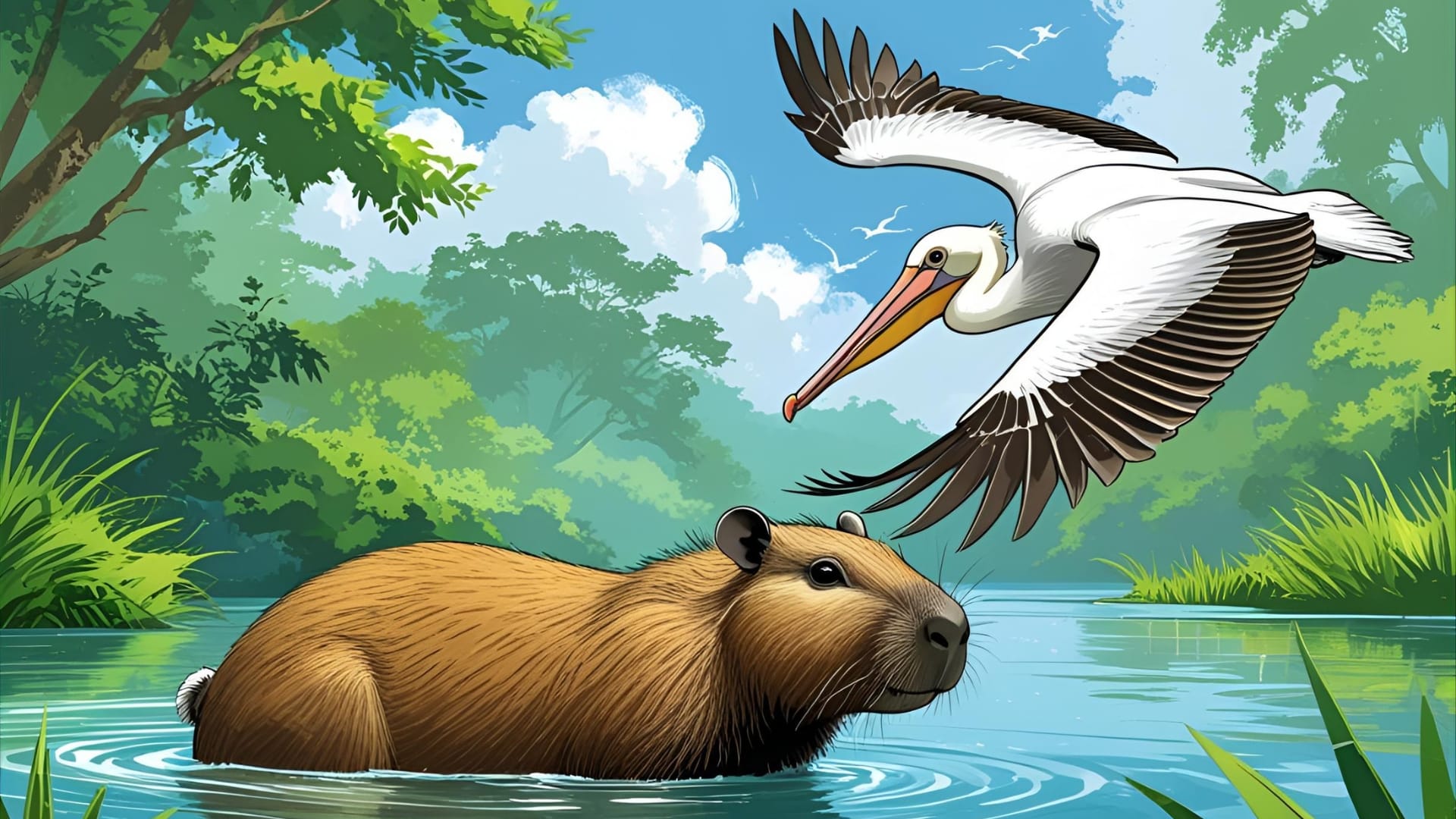
Both animals are excellent swimmers, but in different ways. Capybaras can hold their breath for up to 5 minutes underwater and are semi-aquatic mammals. Pelicans glide above water and are strong divers, plunging beak-first to catch fish. For those interested in comparing the capybara to more engineering-savvy rodents, this capybara vs beaver article offers an insightful breakdown.
Capybara swims for survival and cooling.
Pelican swims to hunt and dominate.
Running Speed
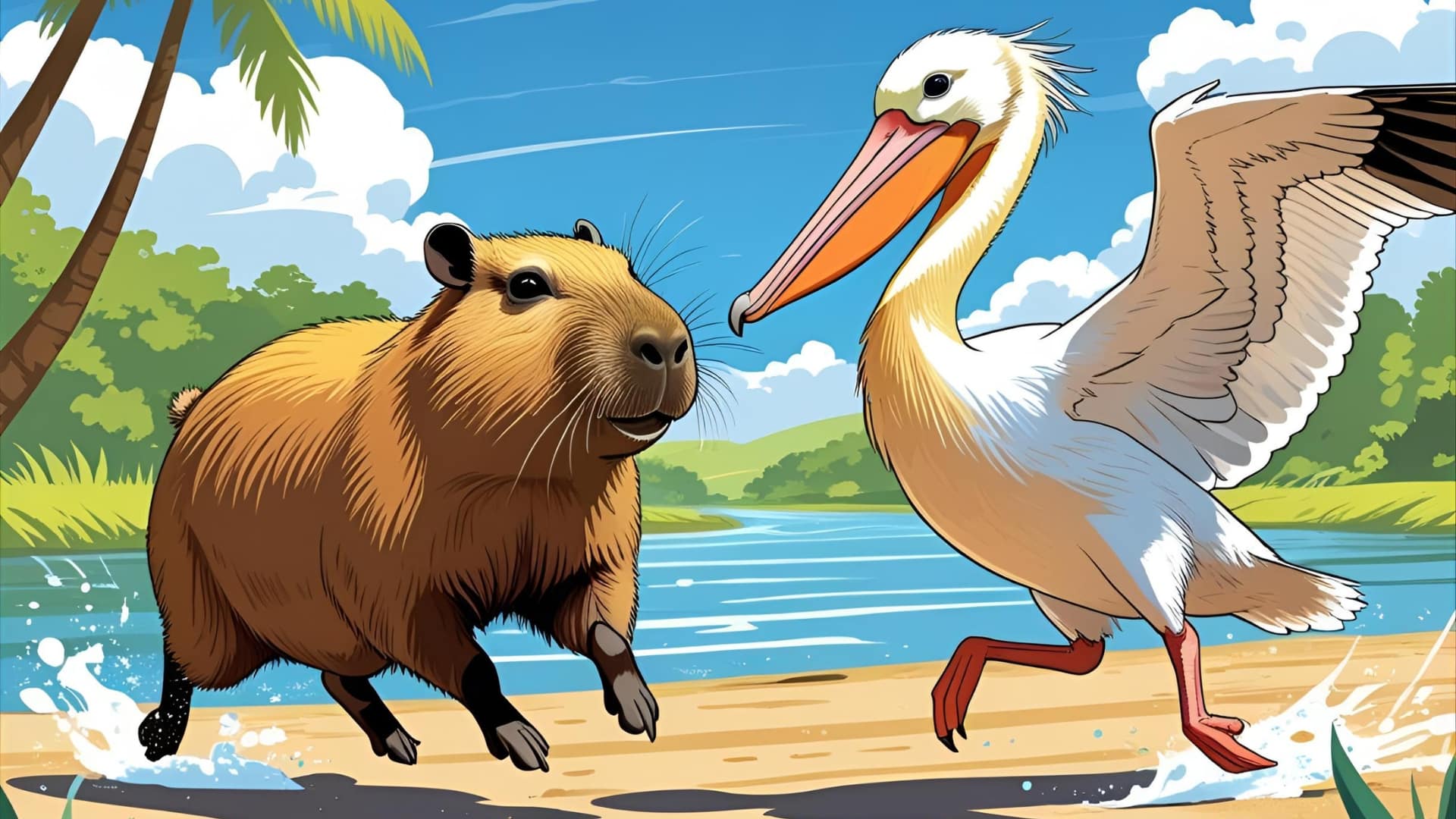
Despite their bulky look, capybaras can sprint up to 35 km/h (22 mph) over short distances to escape predators. Pelicans can’t run fast due to their webbed feet and heavy body structure; their strength lies in flight, not foot speed. On the more unusual side of comparisons, capybaras face a very different kind of animal in the elusive and predatory fossa.
Speed winner on land: Capybara
Personality
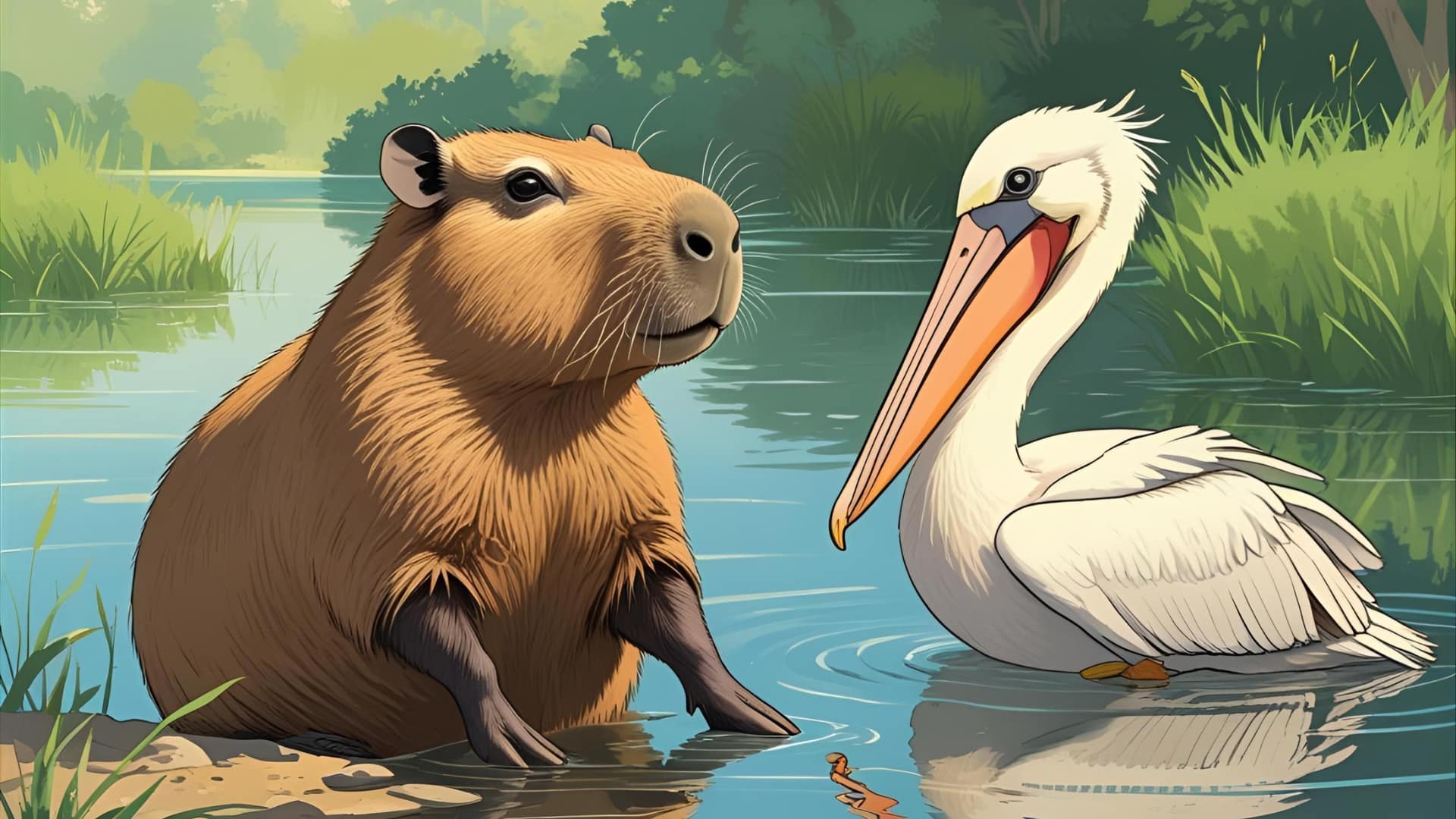
Capybaras are famously calm, tolerant, and friendly even letting other animals sit on their backs. Pelicans, by contrast, can be aggressive when threatened or competing for food. Their huge bills may look comical, but they can use them with surprising force.
Capybara = Chill roommate
Pelican = Pushy neighbor at dinner time
Body Language

Capybaras use subtle cues like vocalizations, nuzzling, and posture to communicate. Pelicans rely on squawking, bill clapping, and puffing up their throat pouch. While pelicans are more expressive during flight or hunting, capybaras constantly use body signals to maintain group harmony.
Comparison Table
| Feature | Capybara | Pelican |
|---|---|---|
| Kingdom | Animalia | Animalia |
| Phylum | Chordata | Chordata |
| Class | Mammalia | Aves |
| Order | Rodentia | Pelecaniformes |
| Family | Caviidae | Pelecanidae |
| Genus | Hydrochoerus | Pelecanus |
| Species | H. hydrochaeris | Varies (e.g. P. occidentalis) |
| Life Expectancy | 8–12 years (wild) | 15–25 years (wild) |
| Hunting Ability | None (herbivore) | High (fish hunter) |
| Grooming | Constant mutual grooming | Occasional preening |
| Loneliness | Dislikes being alone | Can live solo or in colonies |
| Space Needed | Open land + water | Large bodies of water |
| Affection | High—forms bonds with animals | Low—focuses on food & territory |
| Protection | Herd safety, hides in water | Flight + aggressive defense |
| Energy | Calm, slow-paced | Energetic during hunting |
| Weight | 35–66 kg (77–146 lbs) | 4–15 kg (9–33 lbs) |
| Height/Size | 50–60 cm tall (up to 1.3m long) | 1.2–1.8 m wingspan |
| Physical Traits | Webbed feet, barrel-shaped body | Large bill with throat pouch |
Why Do Pelicans Always Want to Eat Capybaras?
This is a myth born from viral videos.
Pelicans don’t actually hunt capybaras. They’re fish-eaters and occasionally try to gulp small mammals or birds but mostly by mistake. In videos where pelicans are seen targeting animals like pigeons or even capybara babies, it’s due to confusion, curiosity, or opportunistic instinct, not a natural prey relationship.
Capybaras are simply too large for pelicans to handle safely. Most attempts end with the bird quickly spitting them out or getting overwhelmed.
So, no pelicans do not have a personal vendetta against capybaras. They’re just… curious, oversized mouths on legs.
Final Thoughts
Capybaras and pelicans couldn’t be more different: one is a peaceful land mammal, the other a skilled aquatic hunter. But when their worlds overlap, strange things can happen—like unexpected encounters caught on camera. Whether it’s a pelican’s oversized appetite or a capybara’s chilled-out vibe, these two animals remind us how wonderfully weird the natural world can be.

